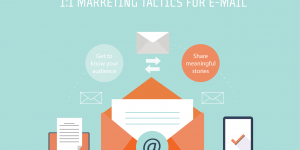When it comes to fundraising—particularly in the higher education space—it’s hard to make a connection, let alone choose the right channel with which to make said connection. Colleges tend to opt for direct mail, which works for some, but for their alumni (especially those who graduated within the last decade) it’s increasingly more difficult to get a response. Worse yet, it can seem virtually impossible to get them to even open the envelope. Getting to the main message itself is one of the biggest challenges in higher ed fundraising, but it’s not without reason. So before you ditch mail to mount a multi-touch email campaign (which wouldn’t be terrible if it’s an integrated campaign), work on improving your direct mail reach.
Slow down with those asks.
There are a lot of presuppositions about direct mail from colleges and universities. As a “young” alumni myself, I can personally attest to having an aversion to any mail I receive from my alma mater. But as I mentioned before, there’s a reason. In the eight years since I graduated, I have yet to receive a letter or mail touch of any kind that hasn’t contained an ask. I know that I’m not alone. In polling friends and colleagues on the issue, they’ve said that more often than not the ask they receive doesn’t go far enough in terms of feeling personal or telling stories that conjure pleasant memories that make us feel compelled to open our checkbooks (or hop onto their online donation page).
Before most mail from an individual’s respective alma mater is even opened (add emails and phone calls to that list), it’s already assumed that it contains an ask for money. If all of these studies on millennials have taught us anything, it’s that they crave meaningful communications and demonstrations of impact. They’re genuinely interested in how their donation is making a difference no matter its size, and they crave stories to help themselves better relate to communities they engage with. The takeaway for colleges and universities of all kinds is to develop a meaningful communications program that primes alumni and other prospects for an ask, asks with intention, and adequately stewards them whether or not they’ve made a gift.
Being personal has never been more important.
No one wants to be just another donor ID number or Dear Alumni. Personalization is so important in all forms of fundraising communication, but its impact on direct mail response is impossible to ignore. In a Caslon report on cross-media marketing, it was noted that deeply personalized mail yields twice the response rate of generic mail. Universities have incredibly valuable data that can be applied to their direct mail communications: areas of study, extracurricular activities, clubs and societies belonged to. It takes a little effort, but all of this information can help create extremely relevant, highly targeted messages to their alumni.
Personalized content is much more than putting a person’s name in the letter’s salutation. It’s about establishing from the beginning that you’ve taken the time get to know your constituency and put thought into how you’d like to solicit their support.
Ditch that generic envelope.
So we’ve already talked about how many alumni have become conditioned to assume all communications from their alma mater are an ask for money. While a lot of the mail they’ll probably receive contains an ask of some kind, especially if it drops at the end of the year or around graduation, there should be an almost equal amount of mail that serves as stewardship material. But if people have gotten accustomed to ignoring everything you send, how are they supposed to know they’re tossing some great stories about their most beloved professor’s recent achievements into the trash? It’s time to stop recycling the same old envelope. Your first goal is getting them to OPEN the letter!
Oftentimes colleges will switch up the design on their envelope if it’s for a specific challenge, but even that word conjures fear of “ugh, another ask.” Different sizes, colors, or text that indicates what’s inside (e.g. See our latest impact report! or A Special Gift Inside) might do the trick when it comes to pushing assumptions aside and making that first significant connection.
The Wrap Up
The things that most donors want to see is that you’re making an effort and that you care about who they are. Employing these techniques might help improve response rates in mail, and even open rates if you’re looking at changing up the way you communicate by email. Take these last remaining slow weeks of summer to think about how you can leverage the massive amounts of data you have on your alumni (and their parents, grandparents, etc.) to create highly relevant messaging. Why? Your end goal shouldn’t be just to get a gift, but to start building a long lasting relationship.
You Might Also Enjoy:
+ Before You Make the Ask: Know and Apply Your Data!
+ Before You Make the Ask: Build Relationships By Being Personal
+ 4 Ways to Reactivate Lapsed Donors
Like what you see? Stay in touch!










